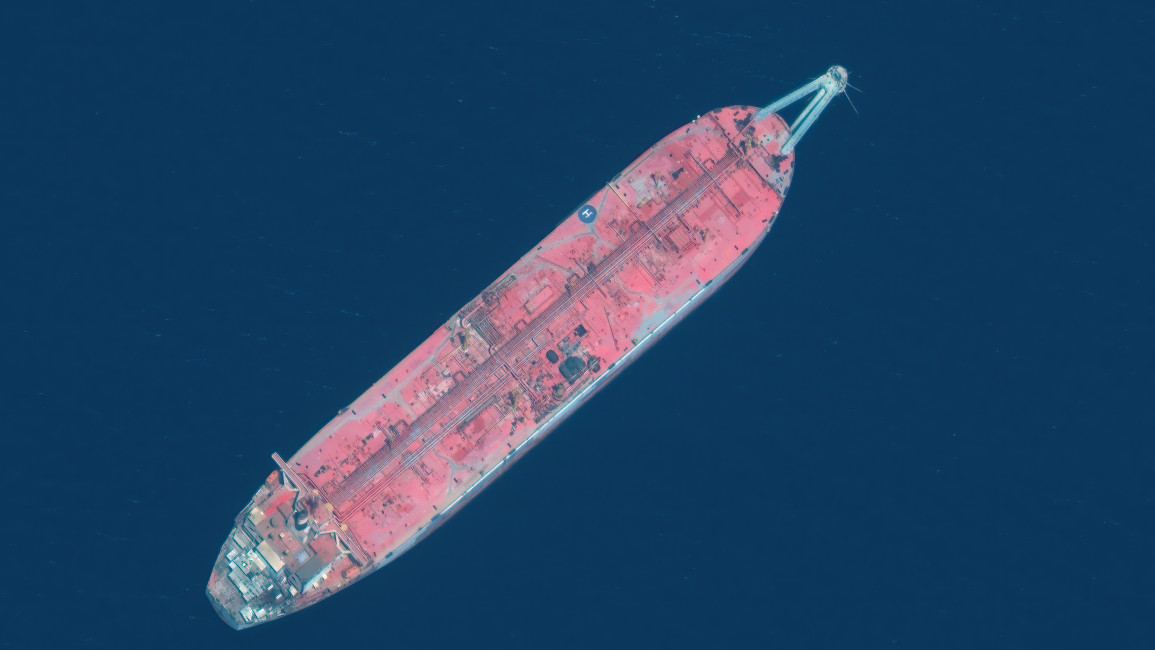UN: Pledge goal reached for averting oil disaster off Yemen
The United Nations has finally raised enough money to remove 1 million barrels of oil from a long-stranded and rusting oil supertanker off Yemen's red sea coast, five nautical miles from the port of Ras Isa.
The pledging goal to remove oil from the FSO Safer Tanker moves Yemen closer toward averting an explosion or leak that could wreak environmental havoc and economic disaster.
The U.N. still has to persuade all donors to pay up on pledges for the first $75 million phase of the emergency removal operation to begin, warned Russell Geekie, a spokesman for U.N. operations in Yemen.
The rusting FSO Safer supertanker holds some four times the estimated amount of oil released in the 1989 Exxon Valdez spill that devastated the Alaskan coast. Funding delays and Yemen’s seven-year war have stymied international efforts to start addressing the threat, making the Safer a spectre of looming disaster throughout Yemen's ongoing conflict.
The U.N. has led a multinational effort to raise funds to start removing the oil safely. U.S. Yemen envoy Tim Lenderking has been among those pressing for donations, citing the threat that coming winter storms could breach the decaying hull.
Liesje Schreinemacher, the Dutch minister for foreign trade and development cooperation, announced a new $7.5 million (7.5 million euros) donation from her government during a trip to Yemen over the weekend.
“With this contribution, we have now reached the amount needed to start the salvage operation and we can prevent a severe disaster from happening,” Schreinemacher tweeted.
The Netherlands, U.S. and Germany plan a news conference Wednesday on the sidelines of the U.N. General Assembly to announce “the successful funding of the emergency operation” to neutralize the threat from the Safer.
“However, now the U.N. needs donors to convert pledges to cash so that work can begin as soon as possible,” Geekie, the spokesman with the United Nations, which is coordinating the effort, told The Associated Press in an email.
After the emergency operation, another $38 million will be needed for the long-term safe storage of the oil, the United Nations says.
The rusting, neglected Japanese-built tanker has been moored in its location 6 kilometers (3.7 miles) away from Yemen’s western Red Sea port of Ras Issa since the 1980s, when it was sold to the Yemeni government.
Documents obtained by the AP in 2020 show that seawater has entered the abandoned tanker’s engine compartment, causing damage to pipes and increasing the risk of sinking. Rust has covered parts of the tanker and the inert gas that prevents the tanks from gathering flammable gases has leaked out. Experts say maintenance is no longer possible because the damage to the ship is irreversible.
The United Nations, the United States and other governments, as well as https://english.alaraby.co.uk/news/greenpeace-urges-arab-league-avert-yemen-oil-disasterand other international organizations, long have warned that a major release — or explosion — could disrupt global commercial shipping through the vital Bab el Mendez and Suez Canal routes, causing untold damage to the global economy.
A major spill would also cause an environmental disaster, devastating the Red Sea and its coastlines. Experts point to potential damage to tourism throughout the region. Local impacts could devastate the fishing industry in impoverished Yemen and potentially close Yemeni ports used for lifesaving humanitarian aid, the international community says.



